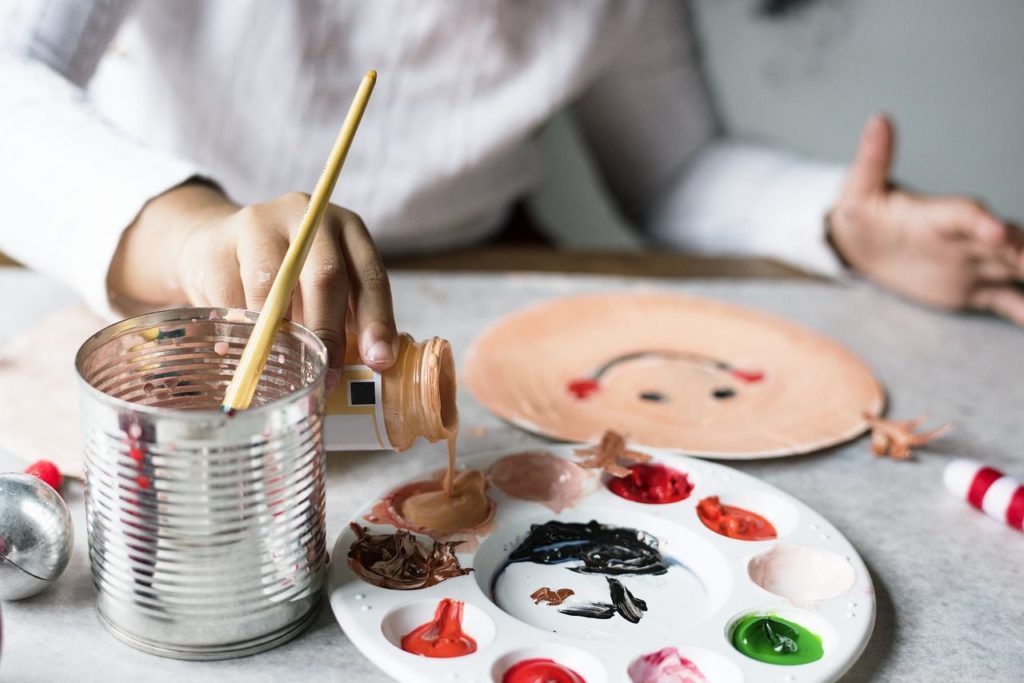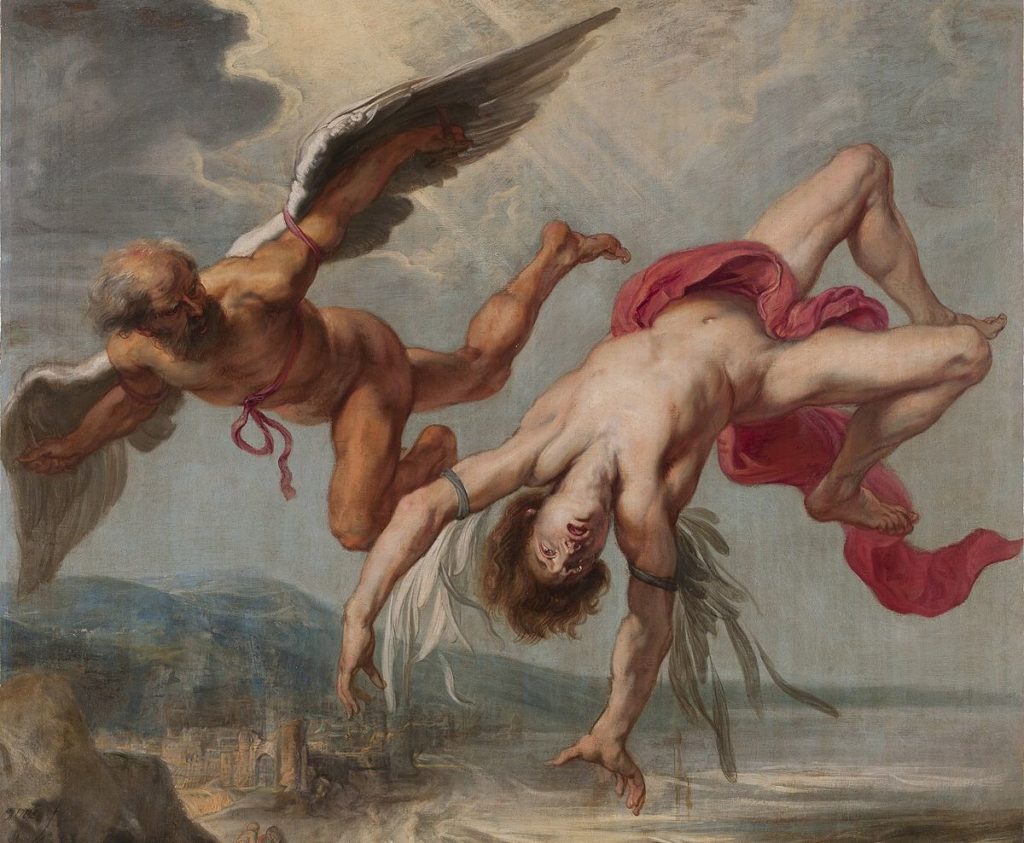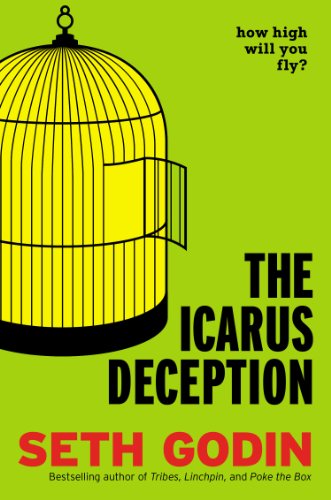
My life as an entrepreneur and a content marketer is a struggle. Especially since I’m a right-brained person with left-brained sensibilities.
Is it possible for me to “make art” while obeying the rules of the online world which define my domain?
How do I balance the need for creativity and originality while ensuring that I do not colour out of the algorithmic box?
Thanks to Seth Godin’s book The Icarus Deception, I now have a fresh perspective of what our team at Cooler Insights should do, and how we should go about doing it.
If you’re new to Seth, you need to know that he isn’t a step-by-step-guide guy.
What he offers, however, is a completely new way of thinking about stuff like entrepreneurship, marketing, work and art.
And he has this extraordinary ability to distill universal truths into the simplest and most elegant ideas.
Join me now as we try to fly higher than where we’re supposed to.
The Deception of Icarus

Source of image (Wikimedia Commons)
So why was the book called The Icarus Deception?
Well, legend has it that south of the Greek island of Samos lies the Icarian Sea—the place where Icarus supposedly died due to his hubris.
His father Daedalus was a master craftsman banished to prison for sabotaging the work of King Minos. To escape, he fashioned a set of wings for himself and his son Icarus. After affixing the wings with wax, they set out to escape.
Daedalus warned his son not to fly too close to the sun. Unfortunately, Icarus disobeyed and flew too high. The wax melted, and Icarus tumbled into the sea and died.
This was where the idiom “Don’t fly too close to the sun” came from.
What wasn’t told to us about the myth was this: in addition to telling Icarus not to fly too high, Daedulus also told his son not to fly too low, too close to the sea, because the water would ruin the lift in his wings.
Unfortunately, this part was forgotten by society. And that’s where the deception comes in.
We now become so obsessed about the risk of shining brightly, that we’ve forgotten about the dangers of flying too low.
Comfort Zones vs Safety Zones
The first thing you need to know is that your Comfort Zone is no longer the Safety Zone.
What once was traditionally safe—a secure job, following the rules, obeying the boss, and keeping up quality standards—no longer apply.
In the new Connection Economy as defined by Seth, what used to be abundant is now scarce (and valuable). This is the emotional labour of art, the kind which you can only get by digging deep to connect and surprise, the patience to build trust, and the guts to say, “I made this.”
It is also about being courageous enough to ship what we’ve created. And to feel the pain of possibility, vulnerability, and risk, and do it anyway.
Art is difficult, risky, and frightening. It’s also the only option if we choose to care.—Seth Godin
From the Industrial to Connection Economy
A central theme of The Icarus Deception is the shift from an Industrial Economy of standardization and interchangeable parts to the Connection Economy.
This return to a purer and more authentic age is characterised by the following…
- Trust and Permission: We only do business with those whom we trust; those whose stories resonate with us in an authentic manner.
- Remarkability: No one talks about the boring, predictable and safe. (See Purple Cow for more.)
- Leadership: Leadership means putting yourself on the line, being vulnerable and bringing people to a new place.
- Stories that Spread: In today’s world of abundant choice, the magic is found in stories that resonate; the work of human artists (not corporate machines).
- Humanity: We are drawn to what’s original, vulnerable and transparent—attributes that connect us emotionally with the other person.
To thrive in the new connection economy, we’d need to create art.
Art which is personal, untested, and intended to connect.
Art that requires us to invest our emotional labour and play the long game, transcending the need for applause.
Embracing Kamiwaza
To be an artist, you need to escape from the clutches of propaganda. These are the set of stories created by those in power to put us in our right place.
To condition yourself in the right manner, view yourself to be an impresario—a person who organises, invents, and creates art projects, seemingly out of nothing, using insight and connection more than money.
You need to also change your worldview and embrace your kamiwaza. This is a Japanese word which means being “godlike.”
With kamiwaza, we commit to flying closer to the sun, become more naked and vulnerable to those whom we give our art to, and seek to make a connection.
Grit, Shame and Vulnerability
True artists have Grit.
You’ll possess the following qualities (as described by Angela Duckworth in her book Grit):
- Perseverance: You will persevere because you believe that you have no choice. It is inbuilt in your DNA.
- Hardiness: The grind is part of your work. It is part of what makes your work interesting, challenging, and worth doing.
- Resilience: This is the dynamic process of how you overcome adversity and bounce back, again and again.
- Ambition: Your desire to accomplish a goal may sometimes be correlated with grit. But grit exists regardless of whether it leads to measurable external success.
- Commitment: You set long-term goals that transcend the need for short-term feedback.
- Flow: When you are swallowed by your passion and focused on your art, you can quieten your lizard brain and be engrossed in what makes you truly alive.
True artists can also transcend shame, be vulnerable and naked to those around them.
We will shun the nonbelievers, make art that moves the audience of our choice, and establish true connection.
While we may still face “the resistance” of our lizard brains, we will be able to bypass its screaming effects and do our art anyway.
How to Make Art
In the final section, we’re taught by Seth how we can make art.
This involves the three foundations of art:
- Learn To See: The goal is to see the world for what it is, without labels or interpretation. This comes with the right kind of practice when you’re able to “quiet your cleverness.”
- Learn To Make: This turns you from a spectator into a participant. Bombing is part and parcel of the process.
- Learn To Embrace The Blank Slate: Do not seek to rehash what you’ve done before.
Beyond these basic attributes, you should also be prepared to see failure as part of your journey. Do not be too attached to your art, and view it as a process rather than a product.
Shift your perspective from “What can I get?” to “What can I give?”
10 Habits of Good Artists
Adopt these 10 evergreen habits to be a true artist:
- Learn to see what you’ve made
- Say thank you in writing
- Speak in public
- Fail often
- See the world as it is
- Make predictions
- Teach others
- Write daily
- Connect others
- Lead a tribe
This might end up in crying. If you’re not prepared to cry about it, I’m not sure you’re making art.—Seth Godin
Game For The Challenge?
Art is a not a finite game but an infinite game. Quoting James Carse, Seth explained the differences between the two.
A finite game has rules. It has a winner and loser. It also has an end. The goal of a finite game is to win and be the last man standing.
An infinite game on the other hand, is played for the privilege of playing. The purpose is to allow other players to play better. Here, you will make the next moves that allow other game players to make their next moves even better.
Your goal is to bring abundance and value to all those whose lives you touch. As an artist, every gift you contribute allows them to play the game.
Conclusion – A Call To Arms
Like many of Seth’s previous books, The Icarus Deception seeks to prod and provoke rather than provide a detailed game plan.
Personally, I’ve found it inspiring and relevant during a time when I experienced dryness in my entrepreneurial journey.
I highly recommend that you read this if you’ve found any value from this book review.
Let me end with a quote from the book.
“Art isn’t a result; it’s a journey. The challenge of our time is to find a journey worthy of your heart and your soul.”

